Panera Bread product lawsuit over dangerous Charged Lemonade
Panera Bread is facing two wrongful death lawsuits regarding its caffeinated lemonade drink, “Charged Lemonade.” 21-year-old Sarah Katz and 46-year-old Dennis Brown both died shortly after consuming the drink at different Panera locations.
Sarah’s family claimed she got no notice the lemonade qualified as an energy drink with as much caffeine as coffee. The University of Pennsylvania student had been diagnosed earlier with abnormal heart rhythms as a child, which may have contributed to her death.
Brown’s family claimed he was a member of the “sip club,” which allows unlimited drinks, and after drinking the charged lemonade at dinner near his job in Florida, he died while walking home. His family reported he had no history of energy drink usage.
A third lawsuit was filed last week, claiming that the same drink led to “permanent” heart problems for a woman in Rhode Island.
Responsibility of the Company
I would expect to feel safer eating at Panera Bread than drinking lemonade sold by a kid on the side of the road.
I saw a kid recently selling lemonade and said no. The danger with a homemade lemonade stand could include who knows how clean the kid was, or did he put anything else in the product? For example, what if you have a nut allergy, this kid might be eating peanuts while he made it, and somebody drinks this and goes into anaphylaxis.
But with Panera Bread, they should know better.
The same general product liability principles discussed above also apply to food and beverage products. Before selling a drink containing large quantities of caffeine, the company must first determine that the amount of caffeine is not unreasonably dangerous. If it is deemed potentially dangerous to some users, then the company also must warn of the potential danger. This is especially so in the case of a lemonade drink, in which the presence of caffeine is generally unexpected and which often appeals to young children.
Responsibility of the Manufacturer
When we buy a product, we expect it to work correctly and safely. Our law expects the same thing. Businesses have a duty to ensure that products are reasonably safe for intended use and foreseeable misuse. When a product is defective or unsafe and causes injury, the manufacturer, distributor, and retailer can all be held accountable.
One recent example is car airbags, which are designed to inflate at extreme speed and force to protect the occupants. When an airbag inflator sprays metal shrapnel through the car, injuring the occupants, the product is unreasonably dangerous. And those responsible for designing and selling the product can be held accountable.
It is important to note that a product is not defective and subject to product liability claims just because it is dangerous. Many products are inherently dangerous, including motor vehicles, power tools, appliances, and motorized equipment. Such products serve very useful purposes and are common in our everyday lives. Manufacturers have a duty to design such products to minimize the risk of injury and to warn users of known risks. This is why saws have finger guards, cars have seatbelts, and power tools have auto shut-off devices.
Can a manufacturer be held accountable?
As a part of this duty, manufacturers must also anticipate foreseeable misuses and take reasonable steps to protect against them. For example, it is foreseeable that a child might reach into a spinning clothes dryer. Therefore, newer dryers are designed to stop spinning when the door is opened. It is likewise foreseeable that someone might forget to turn off an iron after using it. And many newer models are now designed to shut off after a few minutes. Companies are also required to warn users of known dangers. This way, the user can weigh the risk before deciding whether or not to use the product and, if so, to use it safely.
A manufacturer or retailer generally cannot be held liable for injuries caused by unforeseeable product misuse. (i.e., using a push lawnmower to trim hedges). This is because companies that make and sell products are not responsible for all injuries caused by their products, but only for those caused by a defect or unreasonably safe design of the product. The end user also has a duty to use products carefully and reasonably. And is generally responsible for his or her injuries when misusing a product or using it in an unreasonable manner.
Technological advancements, government requirements, and market incentives – including litigation – have combined to make products much safer over the last several decades.
Litigation makes products safer.
When it comes to product safety, corporations often put profits before people. They cut corners by excluding safety features, hiding known dangers from regulators, and failing to warn consumers. Litigation often exposes these dangers and the decisions behind them. One well-known example is the Ford Pinto litigation in the 1970’s. Crash tests revealed a substantial risk of fire and explosion due to the design and placement of the fuel tank. Ford engineers determined they could significantly reduce that risk by making small design changes that would have cost less than $15 per car. In a rush to get the Pinto to the market at a low price, Ford deliberately chose not to make those changes, knowing the fuel tank design created a substantial risk of injury and death to occupants. That litigation helped accelerate automobile product safety standards.
Litigation makes products safer in another very important way. It incentivizes companies to put safety first. When companies know that selling a dangerous product can lead to liability, they are much more likely to design and manufacture their products to minimize the risk of harm. The products we all use today are much safer due largely to several decades of litigation exposing dangers and incentivizing safer designs.
I was recently selected to serve on the Palm Beach County Justice Association board, a non-profit organization promoting civil justice. I am proud to be connected to lawyers nationwide who fight in the courts for people injured due to corporate negligence.
Only through action and having regular citizen jurors decide can we ensure a safer world. Yes, there is nothing wrong with a company making a profit. We cannot allow the pursuit of profit to permit shortcuts that lead to death or catastrophic injury.
This could happen to anybody.
I visited a Panera recently, and like other stores, I let my 10-year-old get a drink. I did not check carefully, even knowing about this issue as I did. This was despite me knowing that he loves lemonade, so he dispensed some. We don’t let our children drink caffeine, so I don’t know how it would affect my children.
I can perfectly understand some parents may let kids go to Panera, and the charged lemonade could lead to issues with their kid, hopefully only including a restless night. Luckily, nothing happened, but I remembered my visit when I read about this third lawsuit.
If I, a lawyer who reads up on these sorts of cases, forgot and let my kid get lemonade, how many others could be doing the same?
What should I do when a product causes injury?
If something tragic happens and it could be a defective product, do not wait. Talk to somebody about the tragedy so they can undertake an immediate investigation.
Not every tragedy will result in a lawsuit. Yet every death or catastrophic injury deserves a proper investigation. Maybe the investigation will result in a recall. Maybe a warning label. Or maybe this is a tragedy you can prevent recurrence with a lawsuit.
In product liability cases, the question is whether the product was unreasonably designed or sold by a business that knew or should have known better.
First, notify the appropriate government agency that regulates the product. The U.S. Consumer Product Safety Commission oversees most consumer products sold in the U.S. The Food and Drug Administration oversees most food, beverage, and medications sold in the U.S. These agencies track injuries related to products and issue recalls, improve safety standards, and penalize violators.
Second, if possible, save the product that caused the injury. The appropriate agency may need it for inspection, which may be necessary evidence if you decide to pursue a claim.
Third, contact an attorney to discuss the situation and any legal remedies that may be available to you.
Authored by Aaron Clemens, Esq.

The post Panera Charged Lemonade: Can drink products be dangerous? appeared first on Romano Law Group.




